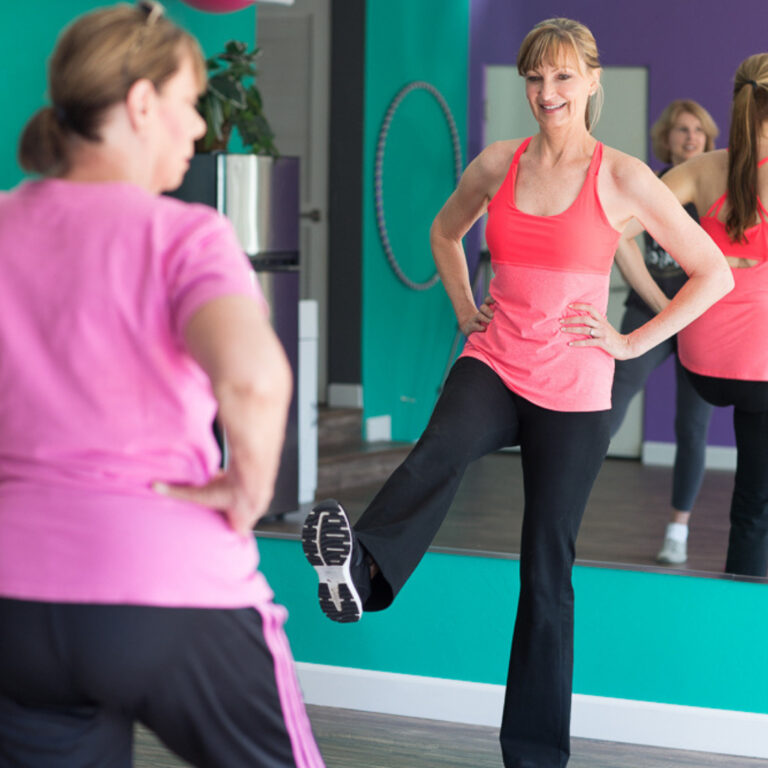5 Core Strengthening Mistakes to Avoid for Joint Pain Relief

If you’re a woman over 50, you already know that staying active is key to living well. But sometimes, the exercises we think are helping us might actually be setting us back, especially when it comes to our joints. Fear not! I’m here to guide you through the common pitfalls of core strengthening and show you how to enhance your fitness routine without the ouch.
I just finished up Pelvis Strength month in the Be Healthy Enough membership and I had a member ask – Amy, I don’t have problems with pelvic floor health, my balance is good, my joints feel good. Do I still need to work on my pelvis and core muscles? First off this is amazing because she’s in her late 60s!!! And the answer is YESSSS. Even if you don’t have joint pain now we want to keep it that way for as long as we can. But the last thing we want to do is have these important exercises CAUSE problems.
Strong core muscles are crucial as they help maintain balance, reduce the risk of falls, and support overall mobility. Unfortunately, common exercise mistakes can actually worsen joint pain rather than help it.
That’s why I’ve prepared this video to show you how to avoid these mistakes so you can incorporate them into your core exercise routines
And if you’re looking for more detailed guidance, be sure to check out our free eBook, ‘Stronger Core, Stronger You: A Guide for Women Over 50,’ available for download with this link.
Let’s get started and make sure you’re getting the most out of your fitness routine, safely and effectively!
Common Mistake #1: Skipping Warm-Ups
I’ve been to so many Pilates classes where we plop down on the mat right away and start working that core. Yes, we may have been able to get away with this in our 30s and I know your time is valuable so you want to dive right in!. It’s crucial to understand that a warm-up should NEVER be skipped not matter what. It gently gets the blood flowing the body temperature up which helps get those muscles ready for activity and the joints ready for movement (motion is lotion for our joints)
Warm-ups also give a chance to check in with our body… What’s hurting today or better yet what feels really good today. This can also get those happy hormones flowing so you go into the workout with a GREAT attitude.
Here are three quick and effective warm-up exercises that are perfect before any core workout. These exercises are gentle on the joints yet effective in getting the heart rate up and the muscles ready:
- Marching in Place – This simple move gets your blood flowing. Stand with your feet hip-width apart and march in place, lifting your knees high towards your chest. Swing your arms with each march to add a little intensity. Continue for 1-2 minutes to get the heart rate slightly up
- Gentle neck and upper back movements. The upper body will be working and it’s important to get it warmed up too. Slowly look side to side, bring your ear to your shoulder, bring your chin to your chest, roll your shoulders around. This could really help you relax these areas of your body during your core work to prevent injury.
- Squish the grape on the mat. Lying on your back imagine a grape under your low back. Exhale and squish the grape, then inhale and arch your back off the mat. Go slowly and gently to get some mobility in the spine and those muscles ready to work.
Common Mistake #2: Rushing Through Movements
One of the key aspects of staying active as we age is understanding the difference between good pain, like the mild, safe muscle soreness you feel after a great workout, and bad pain, which can be a sharp, persistent ache that signals something is wrong. Ignoring these pain signals can lead to serious injuries and setbacks in your fitness journey.
Listen to Your Body
Our bodies are incredibly smart; they tell us when something isn’t right. It’s essential to listen to these signals rather than pushing through pain. Pain during exercise, especially if it’s sharp or persistent, is your body’s way of telling you to stop and assess.
Understanding and respecting your body’s limits does not mean you’re giving up; it means you’re listening to your body and adjusting accordingly, which is a key to long-term fitness success. This mindfulness helps prevent injuries and ensures that you can keep exercising for years to come.
What to Do If Experiencing Pain?
Stop and Evaluate: If you feel pain during an exercise, stop immediately. Continue only if the pain disappears completely. It’s important to be honest with yourself about what you’re feeling.
Modify the Exercise: If the pain persists, try modifying the exercise to make it less intense, or switch to an alternative that doesn’t provoke the pain. Sometimes, a slight adjustment in form or technique is all it takes.
Rest and Recover: Don’t hesitate to take a few days off if the pain continues. Rest is a crucial part of the recovery process.
Seek Professional Advice: If resting doesn’t help, or if the pain is sharp and severe, consult a healthcare professional. It’s important to get a proper diagnosis and treatment plan.
Remember, exercising should challenge you, but it shouldn’t hurt. By paying attention to what your body is telling you, you can maintain a healthy and active lifestyle without putting yourself at risk of injury.
Common Mistake #4: Letting the low back help.
A frequent error in core exercises is allowing the low back to take over the work that your abdominals should be doing. This not only reduces the effectiveness of the exercise but also puts undue stress on your lower back, increasing the risk of injury.
It’s important to maintain proper form by engaging your core throughout each exercise, which helps protect the lower back and ensures that the abdominal muscles are being properly strengthened.
A good tip is to imagine pulling your belly button towards your spine to keep your core tight and the low back flat against the floor or mat during exercises like crunches or leg raises.
Common Mistake #5: Tensing the upper body
I would see this all the time during group classes.—shrugging the shoulders, clenching the jaw, or tightening the neck. This not only diverts the focus away from the core muscles but can also lead to tension and strain in the neck and shoulders. Keeping the upper body relaxed is key to effective core training. Concentrate on loosening any unnecessary tension, particularly in the neck and shoulders, and breathe steadily to help keep the upper body relaxed while you engage the core. This ensures that the core does the work, enhancing the efficiency of your workout and reducing the risk of discomfort or injury in the upper body.
Remember, it’s about moving smarter, not harder! Avoid these mistakes to keep your core strong and your joints happy. And if you want to dive deeper into getting your midsection sturdy without the strain, check out our free eBook, Stronger Core, Stronger You: A Guide For Women Over 50 Just click on the link, and let’s get you moving with confidence and joy!






